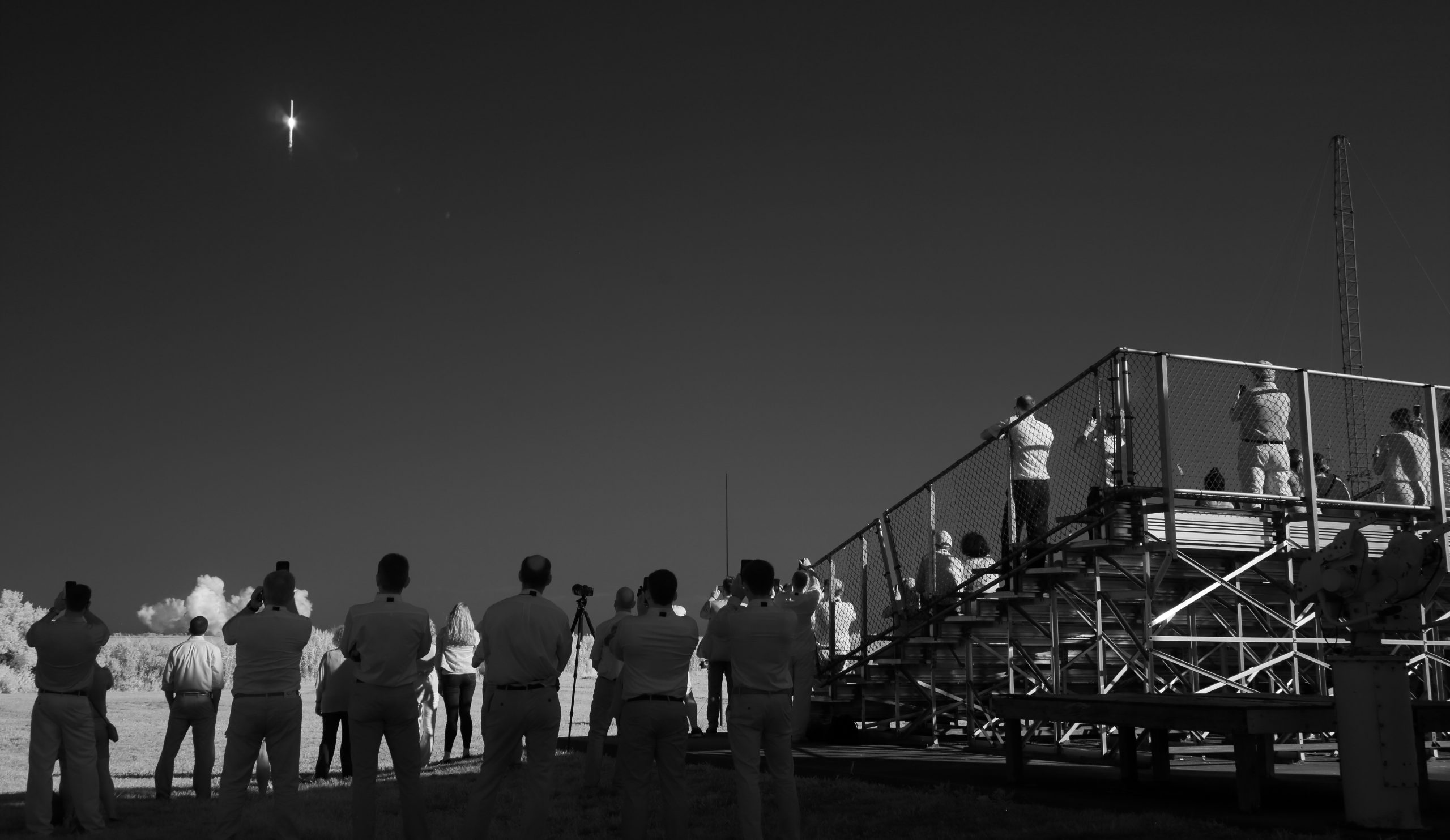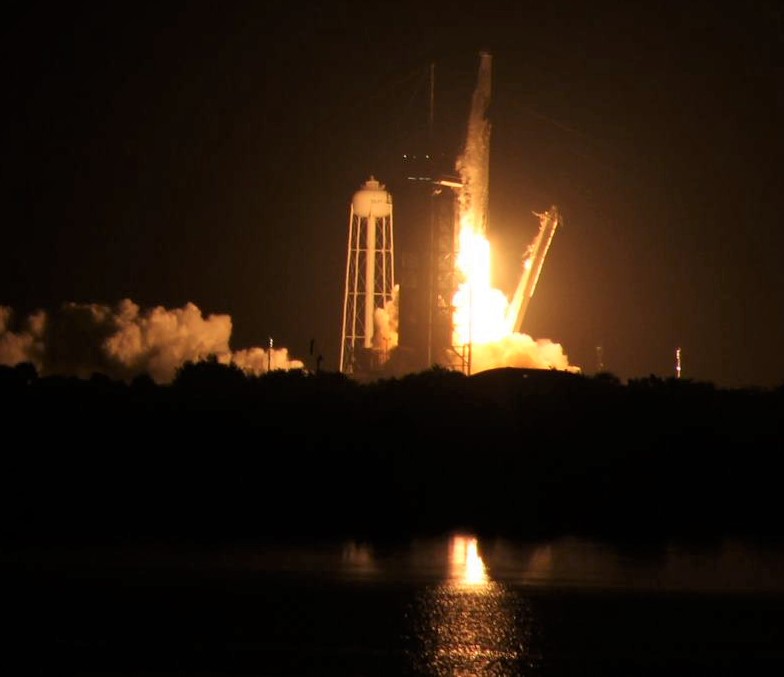
For SpaceUpClose.com & RocketSTEM
After a days delay due to inclement weather a SpaceX Dragon cargo ship took flight on a spectacular middle of the night blastoff this morning, Sunday, Aug. 29, carrying over two tons of science and research investigations and supplies for NASA bound for the International Space Station (ISS) from Florida’s Spaceport.
Liftoff of the flight proven two stage 215-foot-tall (65-meter) Falcon 9 on the NASA SpaceX CRS-23 Cargo Dragon to the ISS took place at 3:14 am. EDT (714 GMT) on August 29 from Launch Complex-39A on NASA’s Kennedy Space Center in Florida during an instantaneous launch window.
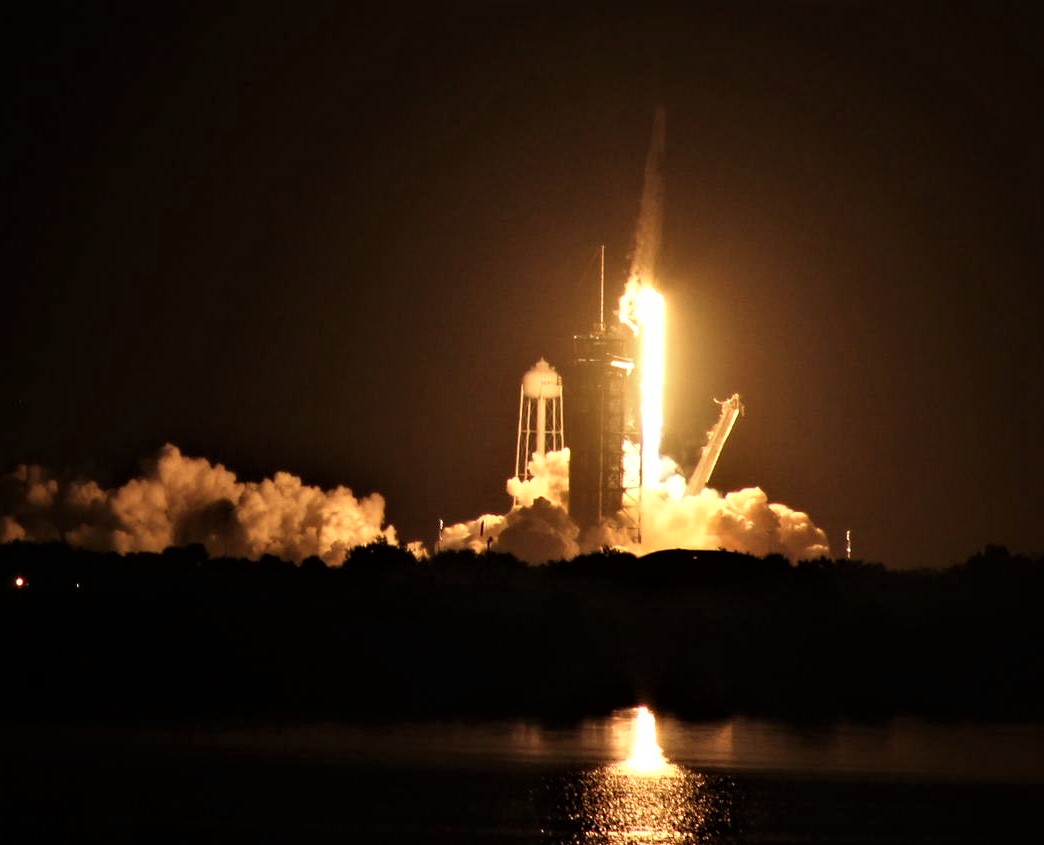
Eight and a half minutes later the recycled Falcon 9 first stage launched for the fourth time safely touched down intact and upright on SpaceX’s newest droneship stationed in the Atlantic Ocean named ‘A Shortfall of Gravitas’ or ASOG on its maiden booster recovery mission.
Overall the CRS-23 mission marked the 90th successful recovery of a first stage by SpaceX by land or by sea.
This reused Falcon 9 previously launched on the Crew-1, Crew-2 and a commercial mission for SpaceX.
After successfully launching at 3:14am ET (07:14 UT), a @SpaceX Dragon spacecraft is on its way to the @Space_Station!
🤩 The crew will soon welcome new @ISS_Research, tasty new food options, & more upon its planned arrival Aug. 30 at 11am ET (15:00 UT): https://t.co/nKRz2KTocJ pic.twitter.com/d797Ul3Ah0
— NASA (@NASA) August 29, 2021
The SpaceX cargo Dragon flew for the second time and was carrying more than 4,800 pounds (2207 kg) of science experiments, crew supplies, and spacecraft hardware for NASA to the ISS and its seven person multinational crew of astronauts and cosmonauts.
The uncrewed Dragon was injected into low Earth orbit after separating successfully from the Falcon 9 upper stage some 12 minutes after liftoff.
This cargo Dragon previously flew on the CRS-21 mission to the ISS in Dec. 2020.
Dragon’s nosecone is open, and the spacecraft is safely in orbit following a launch on the @SpaceX Falcon 9 rocket at 3:14 am ET (07:14 UT) from @NASAKennedy.
Watch a replay of the action: pic.twitter.com/uUUifFrhNL
— NASA (@NASA) August 29, 2021
The cargo Dragon is slated to autonomously dock at the station around 11 a.m. Monday, Aug. 30, to the forward-facing port of the station’s Harmony module and will remain at the station for about a month.
NASA astronauts Megan McArthur and Shane Kimbrough will monitor arrival of the spacecraft.
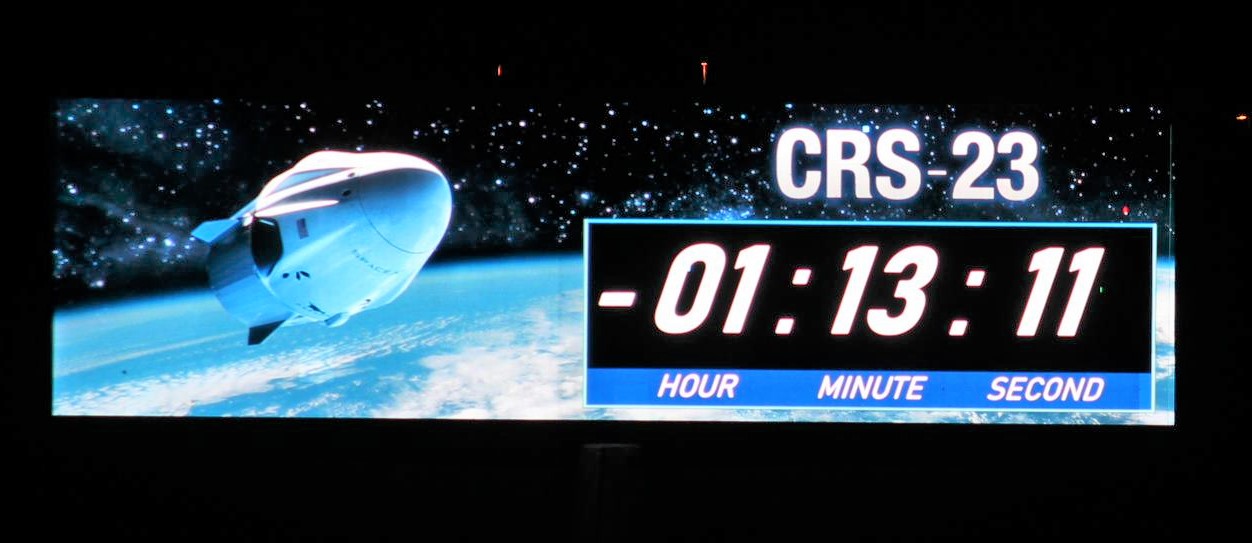
You can watch live coverage of the arrival that will begin at 9:30 a.m. on NASA Television, the agency’s website, and the NASA app.
✅ Confirmed: spacecraft separation of the @SpaceX Dragon from the Falcon 9 rocket.
Next stop the @Space_Station! pic.twitter.com/txcOSfvuWs
— NASA (@NASA) August 29, 2021
Here’s a NASA rundown of several of the science experiments Dragon will deliver including:
Building bone with byproducts
REducing Arthritis Dependent Inflammation First Phase (READI FP) evaluates the effects of microgravity and space radiation on the growth of bone tissue and tests whether bioactive metabolites, which include substances such as antioxidants formed when food is broken down, might protect bones during spaceflight. The metabolites that will be tested come from plant extracts generated as waste products in wine production. Protecting the health of crew members from the effects of microgravity is crucial for the success of future long-duration space missions. This study could improve scientists’ understanding of the physical changes that cause bone loss and identify potential countermeasures. This insight also could contribute to prevention and treatment of bone loss on Earth, particularly in post-menopausal women.
Keeping an eye on eyes
Retinal Diagnostics tests whether a small, light-based device can capture images of the retinas of astronauts to document progression of vision problems known as Space-Associated Neuro-Ocular Syndrome (SANS). The device uses a commercially available lens approved for routine clinical use and is lightweight, mobile, and noninvasive. The videos and images will be downlinked to test and train models for detecting common signs of SANS in astronauts. The investigation is sponsored by ESA (European Space Agency) with the German Aerospace Center Institute of Space Medicine and European Astronaut Centre.
Robotic helpers
The Nanoracks-GITAI Robotic Arm will demonstrate the microgravity versatility and dexterity of a robot designed by GITAI Japan Inc. Results could support development of robotic labor to support crew activities and tasks, as well as inform servicing, assembly, and manufacturing tasks while in orbit. Robotic support could lower costs and improve crew safety by having robots take on tasks that could expose crew members to hazards. The technology also has applications in extreme and potentially dangerous environments on Earth, including disaster relief, deep-sea excavation, and servicing nuclear power plants. The experiment will be conducted inside the Nanoracks Bishop Airlock, the space station’s first commercial airlock.
Putting materials to the test
MISSE-15 NASA is one of a series of investigations on Alpha Space’s Materials ISS Experiment Flight Facility, which is testing how the space environment affects the performance and durability of specific materials and components. These tests provide insights that support development of better materials needed for space exploration. Testing materials in space has the potential to significantly speed up their development. Materials capable of standing up to space also have potential applications in harsh environments on Earth and for improved radiation protection, better solar cells, and more durable concrete.
Helping plants deal with stress
Plants grown under microgravity conditions typically display evidence of stress. Advanced Plant EXperiment-08 (APEX-08) examines the role of compounds known as polyamines in the response of the small, flowering plant thale cress to microgravity stress. Because expression of the genes involved in polyamine metabolism remain the same in space as on the ground, plants do not appear to use polyamines to respond to stress in microgravity. APEX-08 attempts to engineer a way for them to do so. Results could help identify key targets for genetic engineering of plants more suited to microgravity.
Easier drug delivery
The Faraday Research Facility is a multipurpose unit that uses the space station’s EXPRESS payload rack systems, which enable quick, simple integration of multiple payloads . On this first flight, the facility hosts a Houston Methodist Research Institute experiment and two STEM collaborations, including “Making Space for Girls” with the Girl Scouts of Citrus Council in Orlando, Florida.
The Faraday Nanofluidic Implant Communication Experiment (Faraday-NICE) tests an implantable, remote-controlled drug delivery system using sealed containers of saline solution as surrogate test subjects. The device could provide an alternative to bulky, cumbersome infusion pumps, a possible game changer for long-term management of chronic conditions on Earth. Remote-controlled drug delivery could simplify administration for people with limitations.
A partnership between Faraday and Girls Scouts allows troops to play a role in conducting the control experiments, including providing them with images of the same experiments that are happening in space. The studies involve plant growth, ant colonization, and the brine shrimp lifecycle.
These and other cutting-edge investigations join the hundreds of ongoing experiments in biology and biotechnology, physical sciences, and Earth and space science aboard the International Space Station. Advances in these areas will help keep astronauts healthy during long-duration space travel and demonstrate technologies for future human and robotic exploration beyond low-Earth orbit to the Moon and Mars through NASA’s Artemis program. To learn more, check out our SpaceX CRS-23 research highlights story.
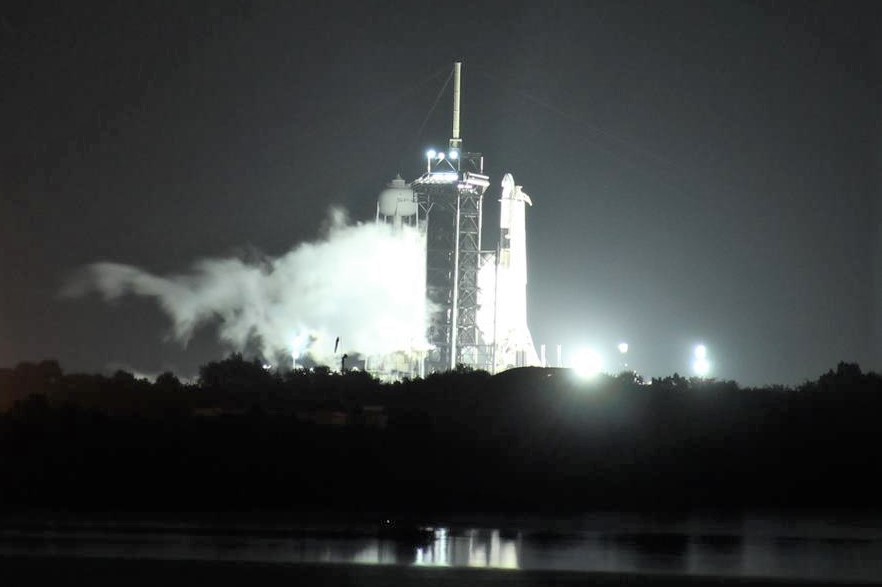
Watch Ken’s continuing reports about SpaceX Cargo and Crew Dragons, Artemis and NASA missions, SLS, Orion, SpaceX Starlink, Commercial Crew and Starliner and Crew Dragon and onsite for live reporting of upcoming and recent SpaceX and ULA launches including Crew 1 & 2 & 3, ISS, Solar Orbiter, Mars 2020 Perseverance and Curiosity rovers, NRO spysats and national security missions and more at the Kennedy Space Center and Cape Canaveral Space Force Station.
Stay tuned here for Ken’s continuing Earth and Planetary science and human spaceflight news: www.kenkremer.com –www.spaceupclose.com – twitter @ken_kremer – email: ken at kenkremer.com
Dr. Kremer is a research scientist and journalist based in the KSC area, active in outreach and interviewed regularly on TV and radio about space topics.
………….
Ken’s photos are for sale and he is available for lectures and outreach events
Please consider supporting Ken’s work by purchasing his photos and/or donating at Patreon:
https://www.patreon.com/kenkremer
x


